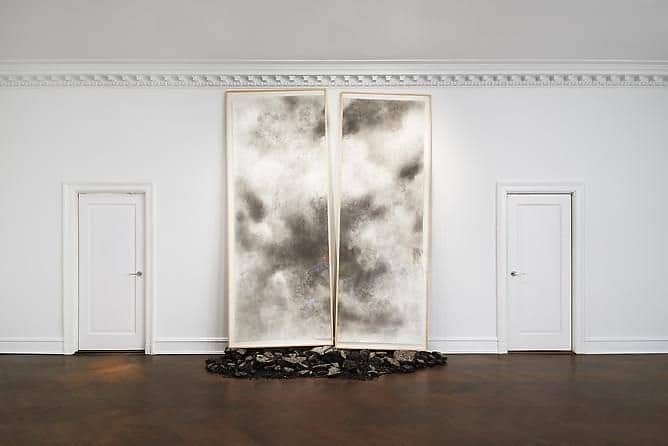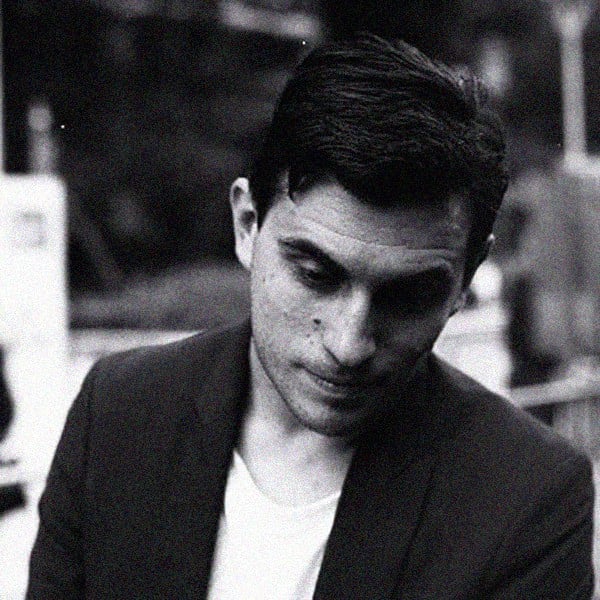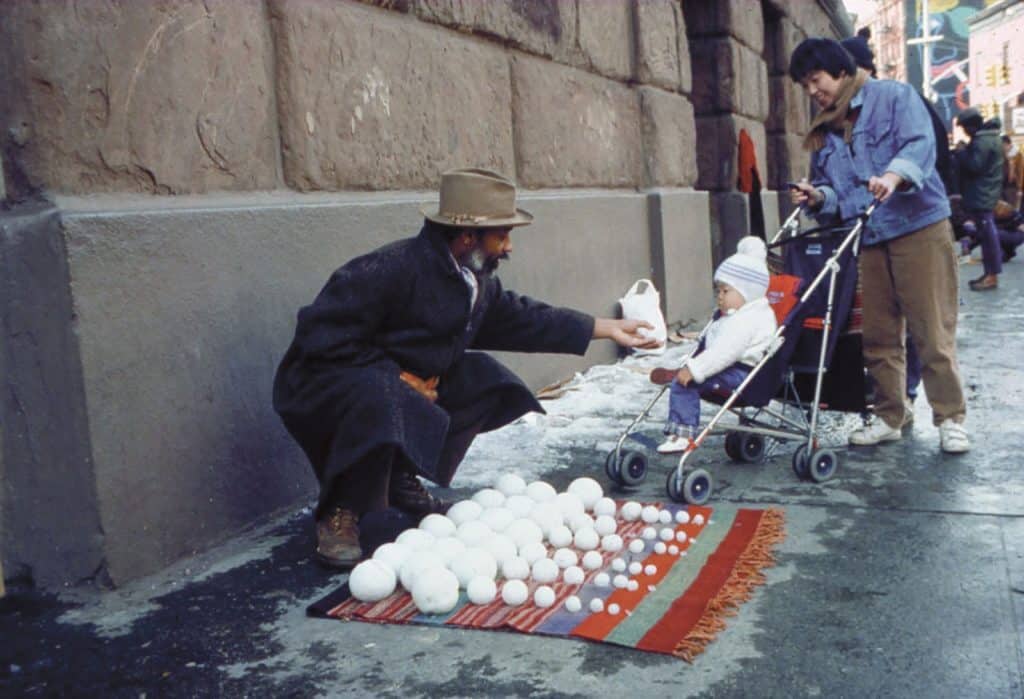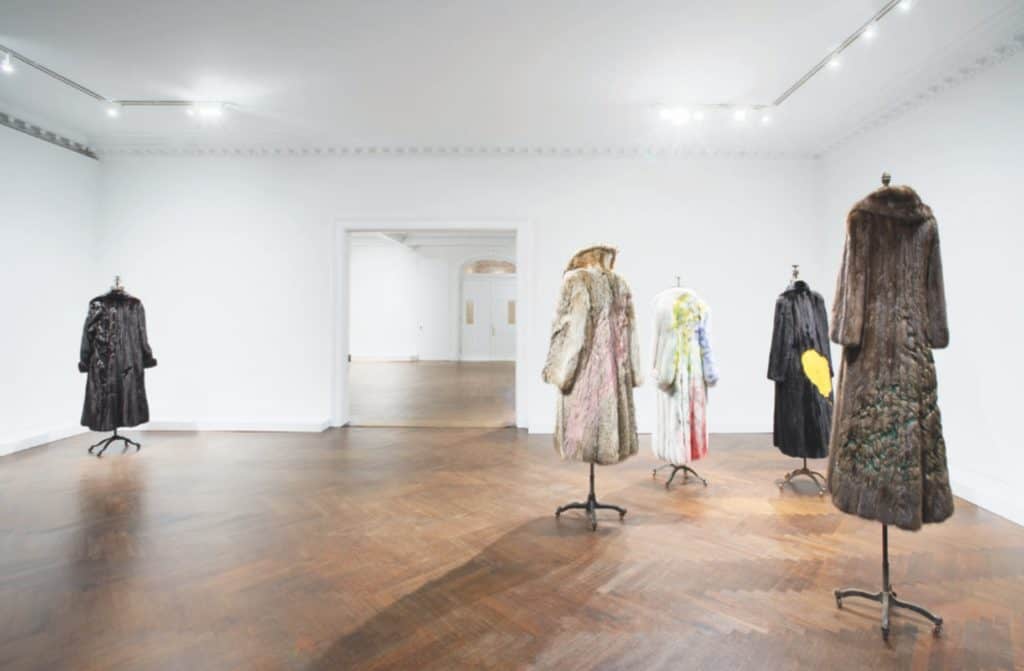Articles and Features
Rising From Slumber: Narcosis, Creation and
David Hammons’ Basketball Drawings


William Pym
Standards & Practices
Comedian Dave Chappelle has a bit in his last standup special where he talks about being called to the Standards and Practices department of his cable network and being told to do things differently. He’s not too bothered about what the network thinks. There’s a vulgar, uproarious punchline. I like the idea of standards and practices. It makes for a good joke. The enforcer of arbitrary rules and norms, a person whose job it is to frame what’s right, right now. For how can you tame a moment? In the international art world, where I have worked since 2002, I grew to become very familiar with a world of amorality, grandiosity and arrogance. I watched pre-2008 hypercapitalism change everyone’s style, and watched money get darker. Now the art world is being rebuilt, like everything else, in the image of a new generation. And one thing is true now as it was then — the art world is a place of porous standards, and practice takes many forms. I am still here, somehow, and I am the Standards and Practices department.
From speaking to artists around the world over the past 70-some days, at deserted studio complexes or in barns in the country or before a shift at a kitchen gig or sitting at home with their families, it appears to me that there are two types of art being made in the lost spring of 2020.
Some artists have ascended, creatively, finding freedom in their practice and making art of escape. It is a Symbolist, Surrealist mode of working, responsive to the immediate moment and protected from the world outside the studio. Working from life by working from memory so it doesn’t look quite right, the subconscious comes out to play — this is the pleasing process of 21st-century Mannerism, pinching reality to different proportions. Shrugging off what one is supposed to do, forgetting lessons and education, forgetting the market and the trends, forgetting that art is a job, and working loose. Creation is available to us in any circumstances, and it is free. These artists are digging in. The message of this work will reveal itself to us, and it will be valuable to us.
Other artists have fallen into narcosis. We feel the repetition and singularity of the daily news, the lack of longterm plans big or small, creating a dull rhythm. The entertainment we view through our screens — from a 30-second flicker through a social media feed to an hour on Netflix — has an exquisitely corrosive design, systematically drawing us deeper into comfort and disengagement. That laptop laying on your chest wants to keep playing all night. There are no algorithms whose instinct it is to stop and turn themselves off. They’re designed to just keep going. Creation is not available to us in these circumstances, it turns out, only slumber and paralysis.
It’s an up-and-down emotional time, of wild hairpin turns, visions, quick decisions, and total inertia. I speak to artists who are dancing on a moonbeam, following their art wherever it goes, and artists who speak of feeling like they are in a coma, without a subject, without a gesture to make. All this changes constantly. I felt, for example, both great and terrible today.

Since the 1980s, American artist David Hammons, now 76, has periodically made drawings by bouncing a basketball on a piece of paper, imprinting it with neighbourhood dirt. Within the parameters of their medium and technique, the Basketball Drawings are highly varied, but they are all far out. They can be black and turbulent, like a brooding, Goya-esque night, or fluffy and serene, like cloud punctuation on an Albert Bierstadt sky-wipe or the mist slivers of vertically receding Japanese vistas, or beefy like Franz Kline, fast and hard, like a workout. They belong in the western canon of Modernist abstraction, cosmological, intuitive, exploratory American story of Sam Gilliam, Helen Frankenthaler, Robert Motherwell all the way back to the American Southwest of the Transcendental Painting Group and O’Keeffe. The Basketball Drawings are not widely found in museum collections, but every one of them could be. They’re iconic. Agnes Gund, America’s philanthropist mom queen, gifted hers to the Cleveland Museum of Art in honour of LeBron James bringing an NBA championship home to Ohio. I saw one of these drawings in the flesh only once, some years ago, in a colossal 17th-century Venetian edifice converted by French billionaire François Pinault to show off his art collection. It hit.
” It’s an up-and-down emotional time, of wild hairpin turns, visions, quick decisions, and total inertia.”
Hammons typically displays the drawings framed, with objects such as a suitcase, stone or basketball propped behind, cambering the work off the wall. Hammons’ work never settles down. Indeed, the drawings are a small part of a larger conceptual apparatus that is devoted to resistance, independence, and blackness above all; we are taking a micro view here. The Basketball Drawings are iconic, but most everything David Hammons makes is iconic, to this day. His best-known work, Bliz-aard Ball Sale, saw him sell snowballs on the street in the New York winter of 1983, but it is no less radical than 2002’s Concerto in Black and Blue, an installation comprising only a darkened warehouse and tiny blue LEDs held by the viewers of the work. (For more on that one, refer to the riffy, deep December 2002 New Yorker profile by Peter Schjeldahl.) And Hammons is still at it. He presented a classic suite with his wife Chie Hammons in 2007, a perfect jump-scare provocation of six full-length fur coats, on mannequins, murdered again with burns, abrasions and stains that create violently beautiful abstract paintings. He asked the ultra-tony L&M Arts gallery if he could present this exhibition at their Upper East Side townhouse, widening the transgression and challenge of the gesture. These works never settle down.

The Basketball Drawings are beautiful, and they are complex, but most of all they’ve got a beat. They react in rubber, they diagram an action while telling a rhythm on the paper, locking it in. They came to me in recent days while thinking about the artists in my world, not the ones who are alive at the canvas, but the ones who can’t move, near frozen in narcosis. Take heart in the Basketball Drawings, whose bounds leads Hammons in a rhythm that asserts a pattern and reveals a way, amplifying the essence of life. Art can serve as a guide for those bewildered–artists and everyone else. All it needs is a pulse. Imagine having that pulse taken away, get up and take it from there.
Relevant sources to learn more
William Pym Standards & Practices, Vol.3 : Maurizio Cattelan
William Pym Standards & Practices, Vol.4 : Amalia Ulman
William Pym Standards & Practices, Vol.5 : Notes From The End of An Art Market
William Pym Standards & Practices, Vol.6 : Dirty Work And Pure Intentions
David Hammons MoMA